History
The Top Dog Football League started on a whim and a prayer ahead of the 2008-09 NFL season and, despite a high turnover rate, continues to provide the usual mix of excitement, tension, smack talk and frustration as any other fantasy football competition. It has also evolved into its second decade, with tweaks to the format, scoring and roster make-up, keeping team owners on their toes.
Origins
The league was originally divided into two five-team divisions — named Payton-Dorsett and Largent-Rice after NFL greats at the running back and wide receiver position — which did battle over a 14-week regular season to determine six teams to progress to the play-offs in pursuit of the ultimate prize: the Dog Bowl. Initially, there were five owners with a team in each division to get things off the ground, before the league expanded, perhaps ambitiously, for its second season. Despite the growth, three of the original teams — Montreal Mayhem, Braveheart Chargers and South Wales Shoplifters — fell by the wayside, but new blood still managed to provide five new franchises for 2009-10 in the shape of Whitchurch Ward Wanderers, Severn Villains, Lebasi Bucks, Newent Falcons and Chatsworth Yugos.
The league was originally divided into two five-team divisions — named Payton-Dorsett and Largent-Rice after NFL greats at the running back and wide receiver position — which did battle over a 14-week regular season to determine six teams to progress to the play-offs in pursuit of the ultimate prize: the Dog Bowl. Initially, there were five owners with a team in each division to get things off the ground, before the league expanded, perhaps ambitiously, for its second season. Despite the growth, three of the original teams — Montreal Mayhem, Braveheart Chargers and South Wales Shoplifters — fell by the wayside, but new blood still managed to provide five new franchises for 2009-10 in the shape of Whitchurch Ward Wanderers, Severn Villains, Lebasi Bucks, Newent Falcons and Chatsworth Yugos.
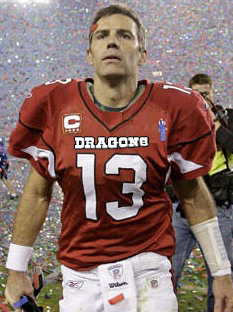
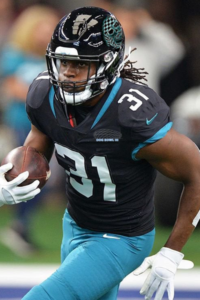
Early Years
The turnover continued at the end of season two, when the Falcons fell after just one campaign, to be replaced by the Enviro Mentalists as the policy of two-team ownership continued in cases of emergency. The Yugos — infamous for drafting players with unusual or tongue-twisting names — lasted only one more year, before making way for the Ellesmere Eagles at the start of season four.
The other early newcomers hadn’t fared too badly, however, with the Bucks taking over from inaugural winners Promunique Dragons as Dog Bowl II champions, and the Ward Wanderers making the final game the following year, only to be subjected to the wrath of the Morgandog Mavericks as they made up for losing to the Bucks the previous season. The final twelve-team campaign, however, saw the Dragons return to the top of the pile, defeating the otherwise undefeated Brockworth Coopers in a high-scoring Dog Bowl IV.
The turnover continued at the end of season two, when the Falcons fell after just one campaign, to be replaced by the Enviro Mentalists as the policy of two-team ownership continued in cases of emergency. The Yugos — infamous for drafting players with unusual or tongue-twisting names — lasted only one more year, before making way for the Ellesmere Eagles at the start of season four.
The other early newcomers hadn’t fared too badly, however, with the Bucks taking over from inaugural winners Promunique Dragons as Dog Bowl II champions, and the Ward Wanderers making the final game the following year, only to be subjected to the wrath of the Morgandog Mavericks as they made up for losing to the Bucks the previous season. The final twelve-team campaign, however, saw the Dragons return to the top of the pile, defeating the otherwise undefeated Brockworth Coopers in a high-scoring Dog Bowl IV.
Bucks Dynasty Claim
Season five saw the biggest change in league history to that point, with the decision to revert to a ten-team set-up and restrict owners to a single team. Out went stalwarts including the double Dog Bowl champion Dragons, Ronnie’s Lott and Gloster Gamecocks, along with the relative newcomer Mentalists, to be replaced by Sheerluck Silverbears and Puerto Rico Macheteros. The Villains jumped from Payton-Dorsett to Largent-Rice in the reshuffle as only the Bucks and Ward Wanderers remained in that division from season four, while both new teams slotted into the same half of the league on their arrival.
Season five saw the Coopers leading a three-way tie in Payton-Dorsett, with the newcomer Macheteros taking Largent-Rice. Only the former made it through to the Dog Bowl, however, and even then they came unstuck against the resurgent Bucks, who qualified with a losing record before posting a strong post-season run to claim their second title.
The Bucks returned to the title game in season six, again having come through the wild card round to defeat Largent-Rice divisional winners Severn Villains in the championship match-up. This time, however, they could not compete with the Diablos de Seqoia, who finally turned potential into success after claiming a first Payton-Dorsett divisional crown.
After two years of divisional stability, season seven saw another new name entering the Largent-Rice line-up, as the Pensacola Panthers replaced former division champion Macheteros. After a promising start, the new boys faded and missed the play-offs, leaving the perennial Bucks to top Largent-Rice and ultimately progress to the Dog Bowl, where they met first-time finalists Ellesmere Eagles, who topped the opposite division. As has become their pattern, the Bucks bounced back from Dog Bowl defeat to clinch another title, becoming the single most successful franchise in TDF history.
Season eight started without the Ward Wanderers, who bowed out — dramatically on the morning of draft day — to make way for Diversion Oilers, while the Panthers took on the Pray4Phoebe moniker in response to a campaign close to owner Matt Lollar’s heart. The team also began the season under temporary ownership, competing in the increasingly strong Largent-Rice side of the league. Regrettably, the Oilers proved to be an empty well, failing to fulfil many of their early fixtures with a full side, until league management took over and ensured the team saw out the season.
Despite the Panthers also relying on the magnanimity of rival team owners in Lollar's understandable absence, the franchise made a fairy-tale run to the Largent-Rice Championship game before coming up short against the dream-killing Bucks. Martin Buckley's men then strengthened their claims as the league's first dynasty by winning a fourth crown and a second in as many years, seeing off a 7-7 Maverick side to become TDF's first repeat champion.
Season five saw the biggest change in league history to that point, with the decision to revert to a ten-team set-up and restrict owners to a single team. Out went stalwarts including the double Dog Bowl champion Dragons, Ronnie’s Lott and Gloster Gamecocks, along with the relative newcomer Mentalists, to be replaced by Sheerluck Silverbears and Puerto Rico Macheteros. The Villains jumped from Payton-Dorsett to Largent-Rice in the reshuffle as only the Bucks and Ward Wanderers remained in that division from season four, while both new teams slotted into the same half of the league on their arrival.
Season five saw the Coopers leading a three-way tie in Payton-Dorsett, with the newcomer Macheteros taking Largent-Rice. Only the former made it through to the Dog Bowl, however, and even then they came unstuck against the resurgent Bucks, who qualified with a losing record before posting a strong post-season run to claim their second title.
The Bucks returned to the title game in season six, again having come through the wild card round to defeat Largent-Rice divisional winners Severn Villains in the championship match-up. This time, however, they could not compete with the Diablos de Seqoia, who finally turned potential into success after claiming a first Payton-Dorsett divisional crown.
After two years of divisional stability, season seven saw another new name entering the Largent-Rice line-up, as the Pensacola Panthers replaced former division champion Macheteros. After a promising start, the new boys faded and missed the play-offs, leaving the perennial Bucks to top Largent-Rice and ultimately progress to the Dog Bowl, where they met first-time finalists Ellesmere Eagles, who topped the opposite division. As has become their pattern, the Bucks bounced back from Dog Bowl defeat to clinch another title, becoming the single most successful franchise in TDF history.
Season eight started without the Ward Wanderers, who bowed out — dramatically on the morning of draft day — to make way for Diversion Oilers, while the Panthers took on the Pray4Phoebe moniker in response to a campaign close to owner Matt Lollar’s heart. The team also began the season under temporary ownership, competing in the increasingly strong Largent-Rice side of the league. Regrettably, the Oilers proved to be an empty well, failing to fulfil many of their early fixtures with a full side, until league management took over and ensured the team saw out the season.
Despite the Panthers also relying on the magnanimity of rival team owners in Lollar's understandable absence, the franchise made a fairy-tale run to the Largent-Rice Championship game before coming up short against the dream-killing Bucks. Martin Buckley's men then strengthened their claims as the league's first dynasty by winning a fourth crown and a second in as many years, seeing off a 7-7 Maverick side to become TDF's first repeat champion.
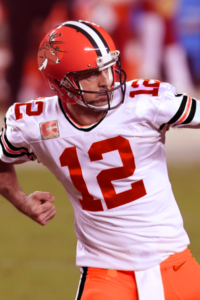
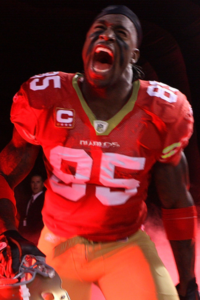


New Faces Emerge
As they had first time around, the Mavericks rebounded from Dog Bowl disappointment to claim the title the very next season, overcoming a Villains team making the big game for the first time. The Villains had not had to deny the Bucks a three-peat in the playoffs, however, as the upstart Apothecary Pillpackers — newcomers to the league along with the Caerleon Centurions in place of the Panthers and Oilers — and Sheerluck Silverbears completed the Largent-Rice playoff trio. There was also a first sighting of the stalwart Barrybados Benefitcheats in the post-season, although the hitherto perennial cellar-dwellers fell at the first hurdle as fellow founder members, the Diablos (10-4) and Mavericks (again 7-7), fought over the Payton-Dorsett crown.
The Dog Bowl appearance proved to be a swansong for the Villains as they bowed out after seven seasons and were replaced by Dewas De'Warriors, who paid tribute to their predecessors by retaining much the same colours and logo. A bigger accolade would follow — albeit maybe a bittersweet one for Villains owner Matt Kerry — as the De'Warriors not only made it to the season finale, but repeated what only the Dragons and Bucks had done before by lifting the iconic Dog Bowl trophy at the first attempt! Their victims were the hapless Diablos, who had failed to claim the Payton-Dorsett crown, but followed in the Mavericks' footsteps by making the final with a 7-7 record. That the De'Warriors were a mere 6-8 says something about a wierd season that saw the Silverbears claim a first — and last — division title and the playoff spots be filled by the Pillpackers, Benefitcheats and Coopers.
As they had first time around, the Mavericks rebounded from Dog Bowl disappointment to claim the title the very next season, overcoming a Villains team making the big game for the first time. The Villains had not had to deny the Bucks a three-peat in the playoffs, however, as the upstart Apothecary Pillpackers — newcomers to the league along with the Caerleon Centurions in place of the Panthers and Oilers — and Sheerluck Silverbears completed the Largent-Rice playoff trio. There was also a first sighting of the stalwart Barrybados Benefitcheats in the post-season, although the hitherto perennial cellar-dwellers fell at the first hurdle as fellow founder members, the Diablos (10-4) and Mavericks (again 7-7), fought over the Payton-Dorsett crown.
The Dog Bowl appearance proved to be a swansong for the Villains as they bowed out after seven seasons and were replaced by Dewas De'Warriors, who paid tribute to their predecessors by retaining much the same colours and logo. A bigger accolade would follow — albeit maybe a bittersweet one for Villains owner Matt Kerry — as the De'Warriors not only made it to the season finale, but repeated what only the Dragons and Bucks had done before by lifting the iconic Dog Bowl trophy at the first attempt! Their victims were the hapless Diablos, who had failed to claim the Payton-Dorsett crown, but followed in the Mavericks' footsteps by making the final with a 7-7 record. That the De'Warriors were a mere 6-8 says something about a wierd season that saw the Silverbears claim a first — and last — division title and the playoff spots be filled by the Pillpackers, Benefitcheats and Coopers.
Bucks Bounce Back In New Era
Having failed to follow up their back-to-back titles with so much as a playoff visit in two seasons, the Bucks were back on top in Season 11, albeit in subdued fashion as 7-6 post-season qualifiers behind newcomer Blitzburgh Mohicans, who underlined the strength of the Silverbears squad new owner Justin Smith inherited. For the second time in six seasons, the Bucks and Diablos met in the Dog Bowl, but this time fortunes were reversed with the Largent-Rice team coming out on top. The Pillpackers, who made the postseason with a 5-7-1 record also saw off the Mohicans to claim third overall, while the reigning champion De'Warriors went from hero to zero.
As the numbers would suggest, Season 11 was the first to see the TDF regular season schedule shrink to 13 games in a bid to ensure that the star names were available for selection on Dog Bowl weekend. Further changes were made to the playoff system, which continued to reward each division champion with a bye, but filled the remaining four spots with the best four teams according to record, regardless of division. As a result, only the Diablos and Mavericks made the cut from Payton-Dorsett, albeit with the two best records in the postseason.
The balance of power shifted the following year, with Payton-Dorsett putting four teams into the playoffs — and the power play resulted in a second title for the Diablos, who reasserted themselves over the Bucks in a repeat meeting of the Season 11 Dog Bowl protagonists. This time around, the two finalists were the respective champions of their division, but it was the rank outsider Benefitcheats (6-7) who secured a best-ever third overall, ahead of three 8-5 qualifiers.
As Top Dog Football edged towards more of a dynasty format, Season 13 saw another big shift, with the tentative introduction of individual defensive players (IDPs) to replace the more common team defenses. There was also another new franchise in the fold, with the Migland Pounders stepping in where the Eagles once dared, even as the ongoing COVID-19 pandemic continues to cast a long shadow over football in general.
Out of the chaos came the league's sixth different champion, with the Coopers finally shedding their bridesmaid tag to finally claim a Dog Bowl. The Coops had been the best team through the regular season, but a bye had not always gone in their favour in the past, and it was something of a relief to owner Marc Knowlton when his long-tenured team eventually saw off Dog Bowl debutants, the Caerleon Centurions. The Centurions had emerged from a three-way logjam atop the Largent-Rice Division, beating the Bucks and Mohicans on the 'points for' tie-breaker before having to beat the five-time champions in the semi-final match-up.
Having failed to follow up their back-to-back titles with so much as a playoff visit in two seasons, the Bucks were back on top in Season 11, albeit in subdued fashion as 7-6 post-season qualifiers behind newcomer Blitzburgh Mohicans, who underlined the strength of the Silverbears squad new owner Justin Smith inherited. For the second time in six seasons, the Bucks and Diablos met in the Dog Bowl, but this time fortunes were reversed with the Largent-Rice team coming out on top. The Pillpackers, who made the postseason with a 5-7-1 record also saw off the Mohicans to claim third overall, while the reigning champion De'Warriors went from hero to zero.
As the numbers would suggest, Season 11 was the first to see the TDF regular season schedule shrink to 13 games in a bid to ensure that the star names were available for selection on Dog Bowl weekend. Further changes were made to the playoff system, which continued to reward each division champion with a bye, but filled the remaining four spots with the best four teams according to record, regardless of division. As a result, only the Diablos and Mavericks made the cut from Payton-Dorsett, albeit with the two best records in the postseason.
The balance of power shifted the following year, with Payton-Dorsett putting four teams into the playoffs — and the power play resulted in a second title for the Diablos, who reasserted themselves over the Bucks in a repeat meeting of the Season 11 Dog Bowl protagonists. This time around, the two finalists were the respective champions of their division, but it was the rank outsider Benefitcheats (6-7) who secured a best-ever third overall, ahead of three 8-5 qualifiers.
As Top Dog Football edged towards more of a dynasty format, Season 13 saw another big shift, with the tentative introduction of individual defensive players (IDPs) to replace the more common team defenses. There was also another new franchise in the fold, with the Migland Pounders stepping in where the Eagles once dared, even as the ongoing COVID-19 pandemic continues to cast a long shadow over football in general.
Out of the chaos came the league's sixth different champion, with the Coopers finally shedding their bridesmaid tag to finally claim a Dog Bowl. The Coops had been the best team through the regular season, but a bye had not always gone in their favour in the past, and it was something of a relief to owner Marc Knowlton when his long-tenured team eventually saw off Dog Bowl debutants, the Caerleon Centurions. The Centurions had emerged from a three-way logjam atop the Largent-Rice Division, beating the Bucks and Mohicans on the 'points for' tie-breaker before having to beat the five-time champions in the semi-final match-up.
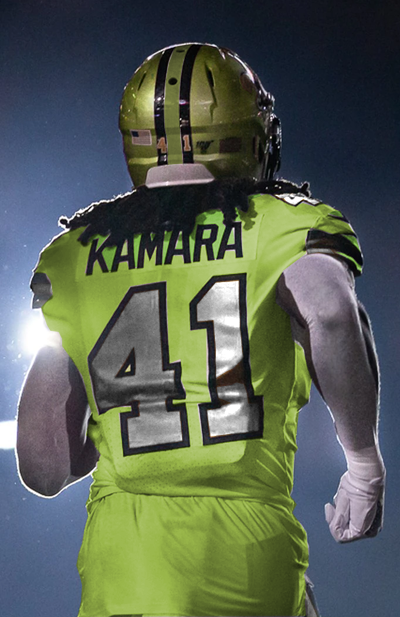
The Current Format
Under the current TDF format, every team plays each of its division rivals twice - home and away - as well as facing off against the five teams in the other division. The top team in each division qualifies for the play-offs by right, earning a bye through week one of the post-season. However, three of the remaining four places are claimed by the next best records, regardless of division, with the sixth and final spot being awarded to the highest scoring team amongst those not yet qualified. The remaining four teams enter their own post-season bracket to vie for the right to the following season's opening draft picks in both the annual rookie and long-established free agent drafts.
While divisional champions receive a bye through the first week of the play-offs, the remaining teams battle to meet them in the divisional championship game. The winners of the two championship games go forward to the Dog Bowl, while losing teams at each stage of the play-offs vie for draft position, with the winners of each placing game earning the higher selection spot. Seasons one through five saw the four non-play-off teams compete in a ladder format for the #1 pick, but that format was revised in favour of a round-robin competition in season six.
Under the current TDF format, every team plays each of its division rivals twice - home and away - as well as facing off against the five teams in the other division. The top team in each division qualifies for the play-offs by right, earning a bye through week one of the post-season. However, three of the remaining four places are claimed by the next best records, regardless of division, with the sixth and final spot being awarded to the highest scoring team amongst those not yet qualified. The remaining four teams enter their own post-season bracket to vie for the right to the following season's opening draft picks in both the annual rookie and long-established free agent drafts.
While divisional champions receive a bye through the first week of the play-offs, the remaining teams battle to meet them in the divisional championship game. The winners of the two championship games go forward to the Dog Bowl, while losing teams at each stage of the play-offs vie for draft position, with the winners of each placing game earning the higher selection spot. Seasons one through five saw the four non-play-off teams compete in a ladder format for the #1 pick, but that format was revised in favour of a round-robin competition in season six.
